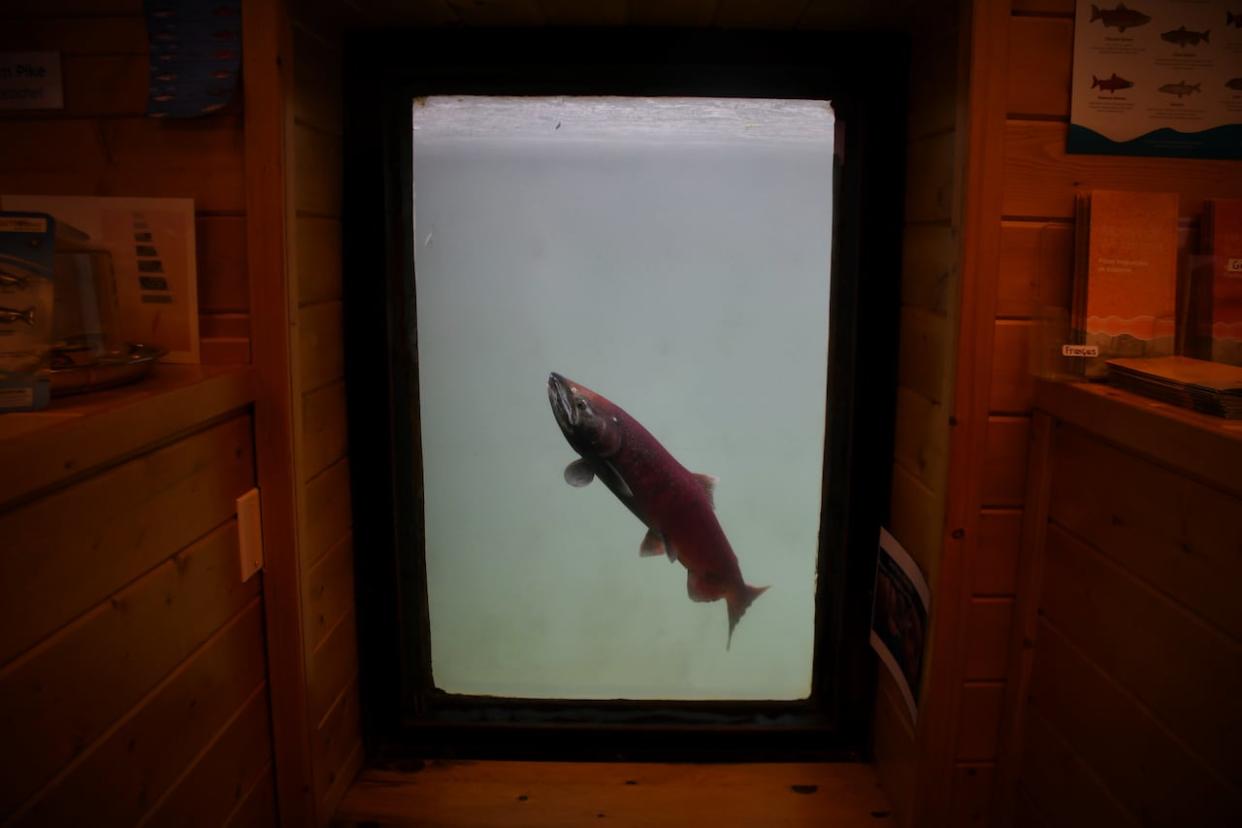Another 'pretty abysmal' year for Yukon River chinook and fall chum salmon

The 2023 chinook and fall chum runs on the Yukon River once again failed to meet conservation targets on both sides of the U.S.-Canada border.
While not as dire as last year, both runs still ranked as among the worst on-record for both species — the chinook run was the second-smallest, while the chum run was the fifth.
"It's pretty abysmal," Yukon Salmon Sub-Committee chair Tim Gerberding said in an interview last month.
"We're in really dire circumstances. It's perhaps not an overstatement to say that, you know, these salmon are literally facing the verge of extinction if something doesn't turn around pretty quick here."
According to preliminary data, the sonar at Pilot Station, an Alaska community less than 200 km from the mouth of the Yukon River, counted 58,500 chinook this year.
Only 15,300 of those fish made it to Eagle, near the Yukon border.
A minimum of 42,500 chinook are supposed to get to their Canadian spawning waters to meeting conservation goals.
2023 is the fourth year in a row that that target hasn't been hit.
Meanwhile, an estimated 257,000 to 290,000 fall chum were counted at Pilot this year. Even on the higher end, this was still 10,000 short of the number required to meet the drainage-wide escapement goal.
Fall chum enter Canada on both the Yukon and Porcupine rivers; 21,600 were counted at Eagle this year, compared to an average of 161,000, while 14,700, or just more than half of the average, were counted on the Porcupine.
Adam O'Dell, a senior stock assessment biologist with Fisheries and Oceans Canada in Whitehorse, said that historical averages aren't necessarily a good indicator for Yukon River chinook and fall chum anymore given the "dramatic" shift in the run sizes for both species in recent years.
"Comparing those long-term averages, it can be quite misleading now because things just appear to be on a totally different scale," he said.
"Unfortunately, you know, you kind of cross your fingers every year… you still hope to see numbers come back."
Fishing for chinook and fall chum was once again largely closed on both sides of the Canada-U.S. border, except for a brief opening in Alaska for fall chum later in the season.
Climate change is 'elephant in the room'
Holly Carroll, the in-season federal subsistence fishery manager for the U.S. Fish and Wildlife Service, said she acknowledged the "incredible loss and hardship" the fishing closures have had for communities along the Yukon River on both sides of the border.
"It's really hard to do this work and to not have a happier message for people," she said, but added that she thought focusing on resiliency — both of the fish and the people who have relied on them for thousands of years — and finding solutions was important.
A number of research projects, including a study on what's happening to young salmon out in the Bering Sea, and on a parasite in chinook that could be causing them to die during migration, are continuing, she said.
"We need to focus on doing this research to figure out what things are affecting their survival," she said. "We may not be able to change all those things, but having an understanding of it will help us better manage the species in future years."
Gerberding, the salmon sub-committee chair, said there was an "elephant in the room" when it comes to the factors behind the chinook and fall chum declines — climate change.
Salmon are adapted to swimming in cold water and the Yukon River and other bodies of water have been warming up, meaning the fish need to use more energy to swim upstream.
"Many of them simply don't make it, they run out of gas before they get there," Gerberding said.
Gerberding acknowledged there was no "quick fix" to climate change other than a global reduction of carbon emissions, which he acknowledged was "daunting." However, he described salmon as the "canary in the coal mine."
"The way that the salmon go here I think ultimately will indicate the way that many of our fish and wildlife resources go, and so it's time to wake up and begin to take steps to save our salmon," Gerberding said, adding that he had hope that humans would do the right thing.
Brandy Mayes, Kwanlin Dün First Nation's operations and fish and wildlife manager, said another year of poor salmon returns was "disheartening" — the Whitehorse fish ladder, one of the farthest chinook migration points, only saw 154 salmon pass through this year.
But while the Yukon River is in a "sad state," Mayes, like Gerberding, said she believed the situation could be turned around.
"We'll never give up hope," she said.
"You know, there's quotes from elder Louis Smith saying, like, you know, 'If it wasn't for salmon, we would have all starved to death, and now it's your turn to save the salmon.' And that's what we're working on."
Mayes' team runs several monitoring projects in the Whitehorse area, and this year, one of them offered a glimmer of hope for the future.
"We haven't had fish at Michie Creek for the last three years," she said.
"This year, we went out — we had 24 salmon."


